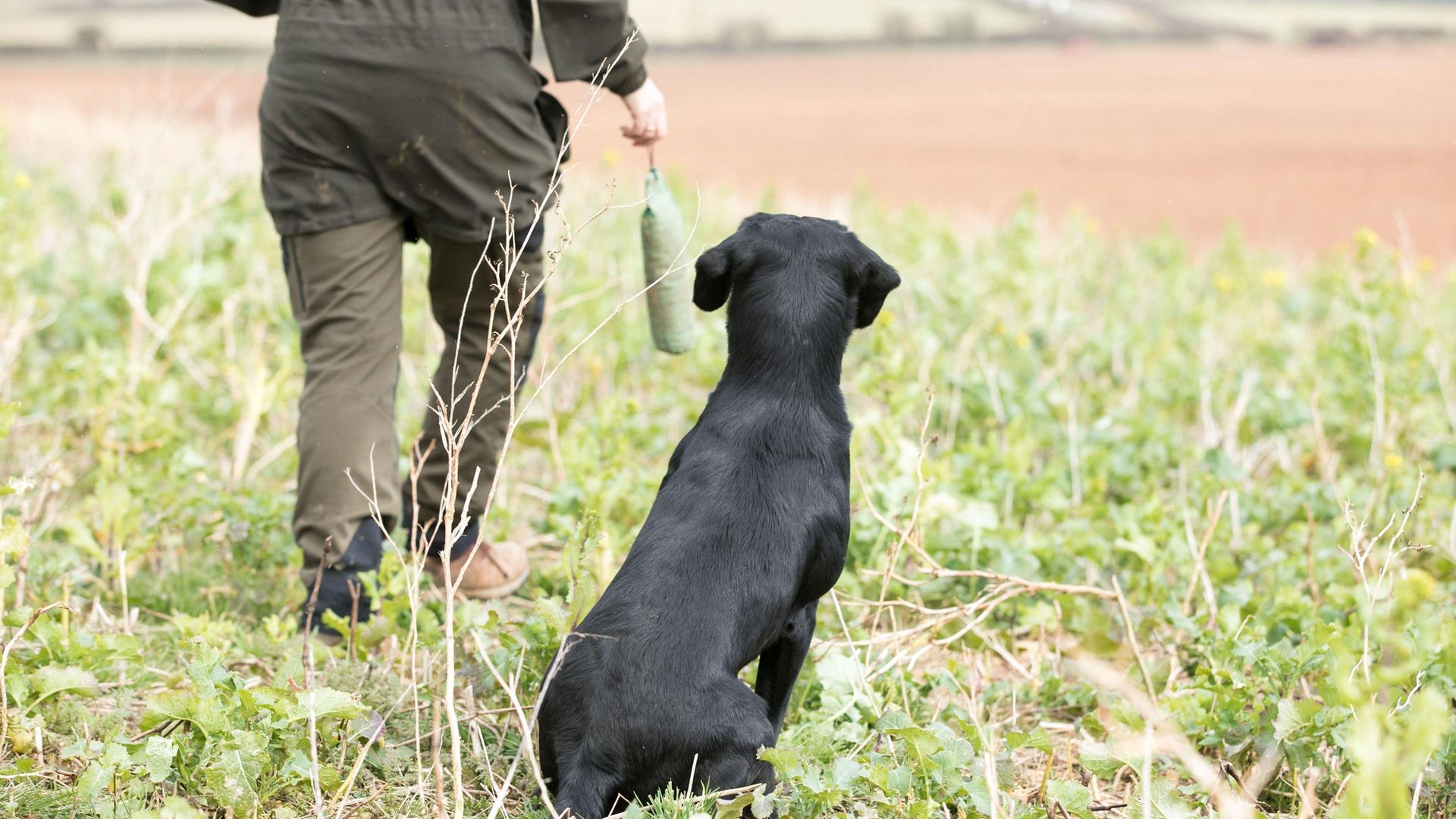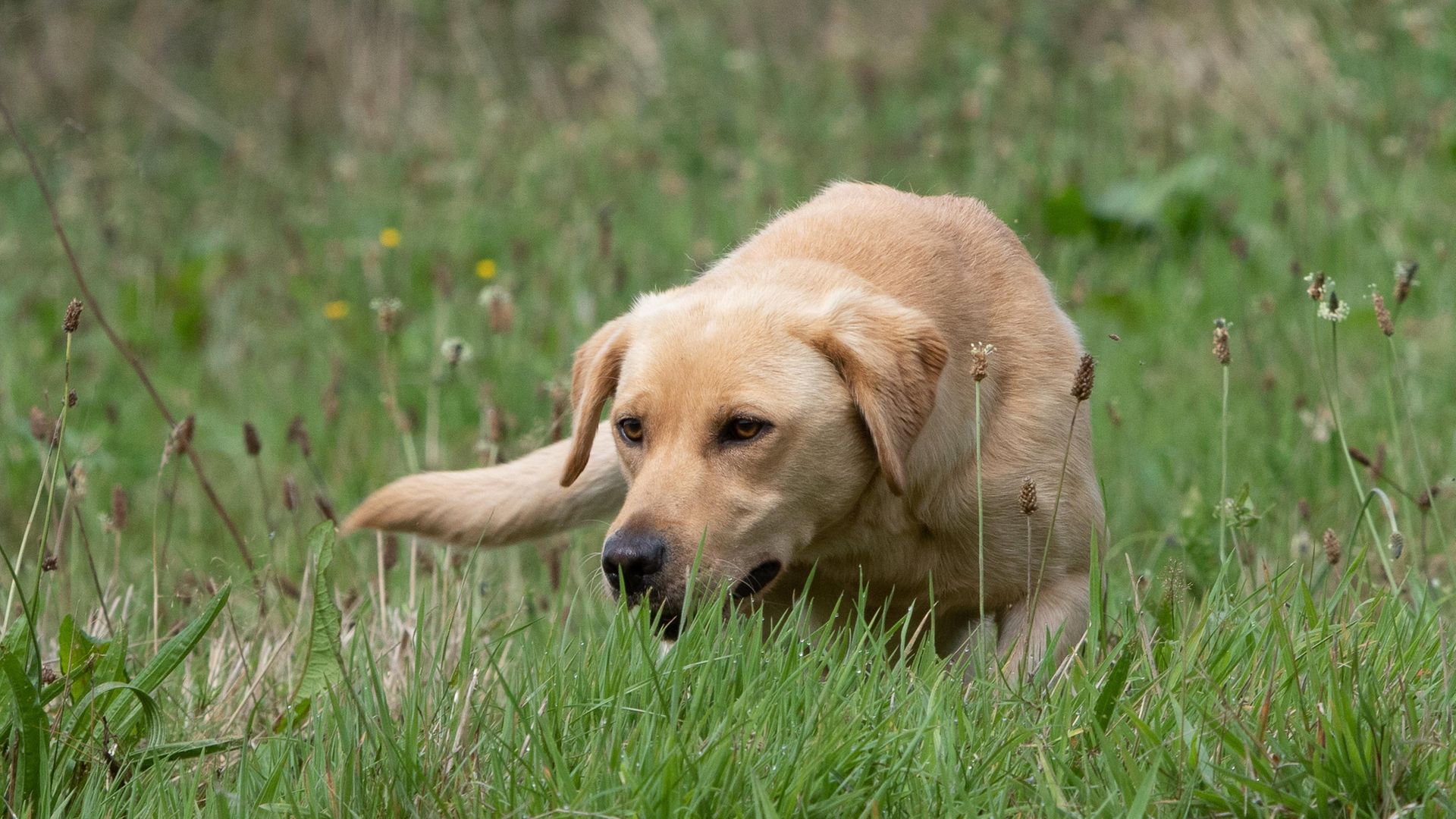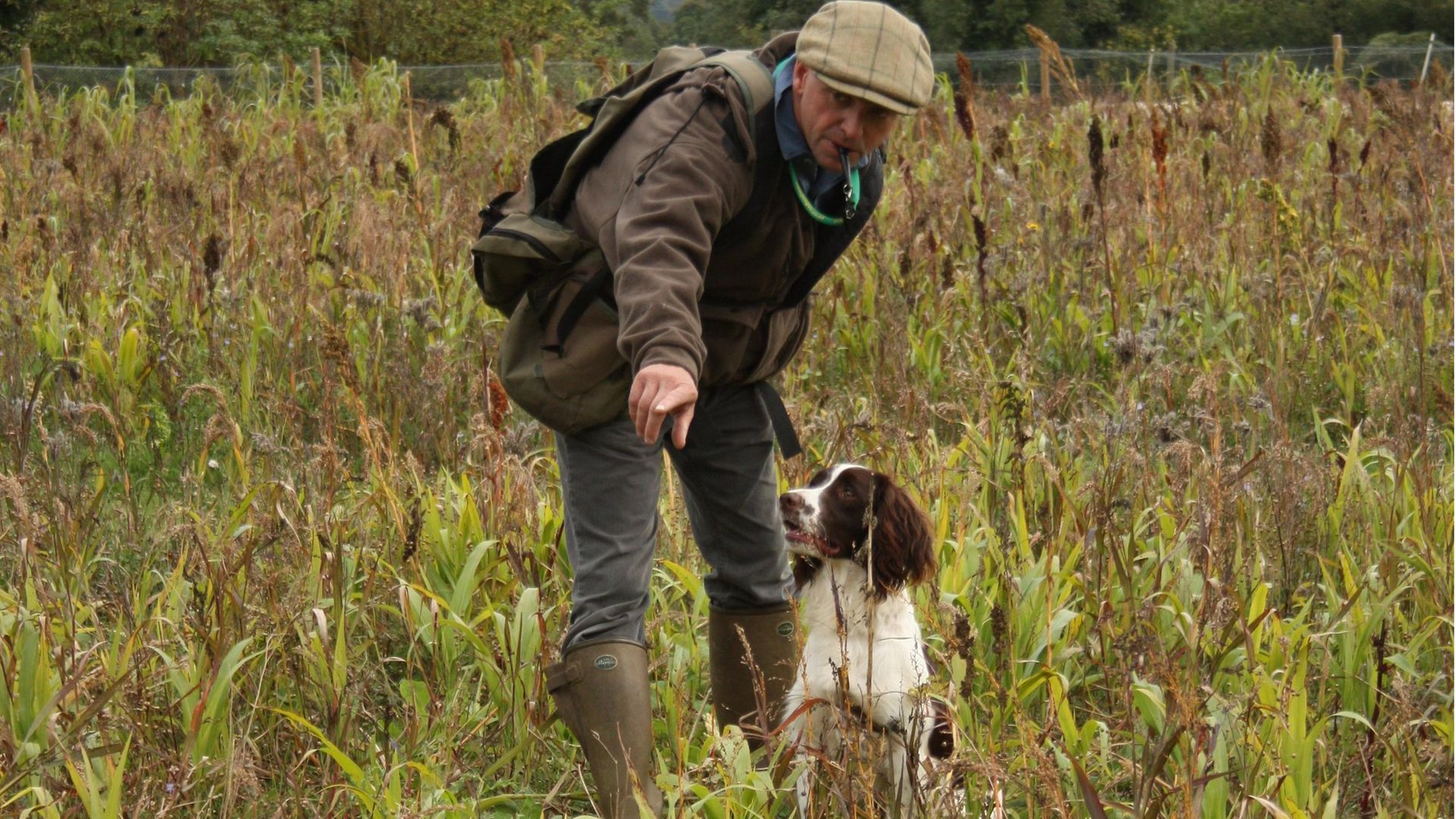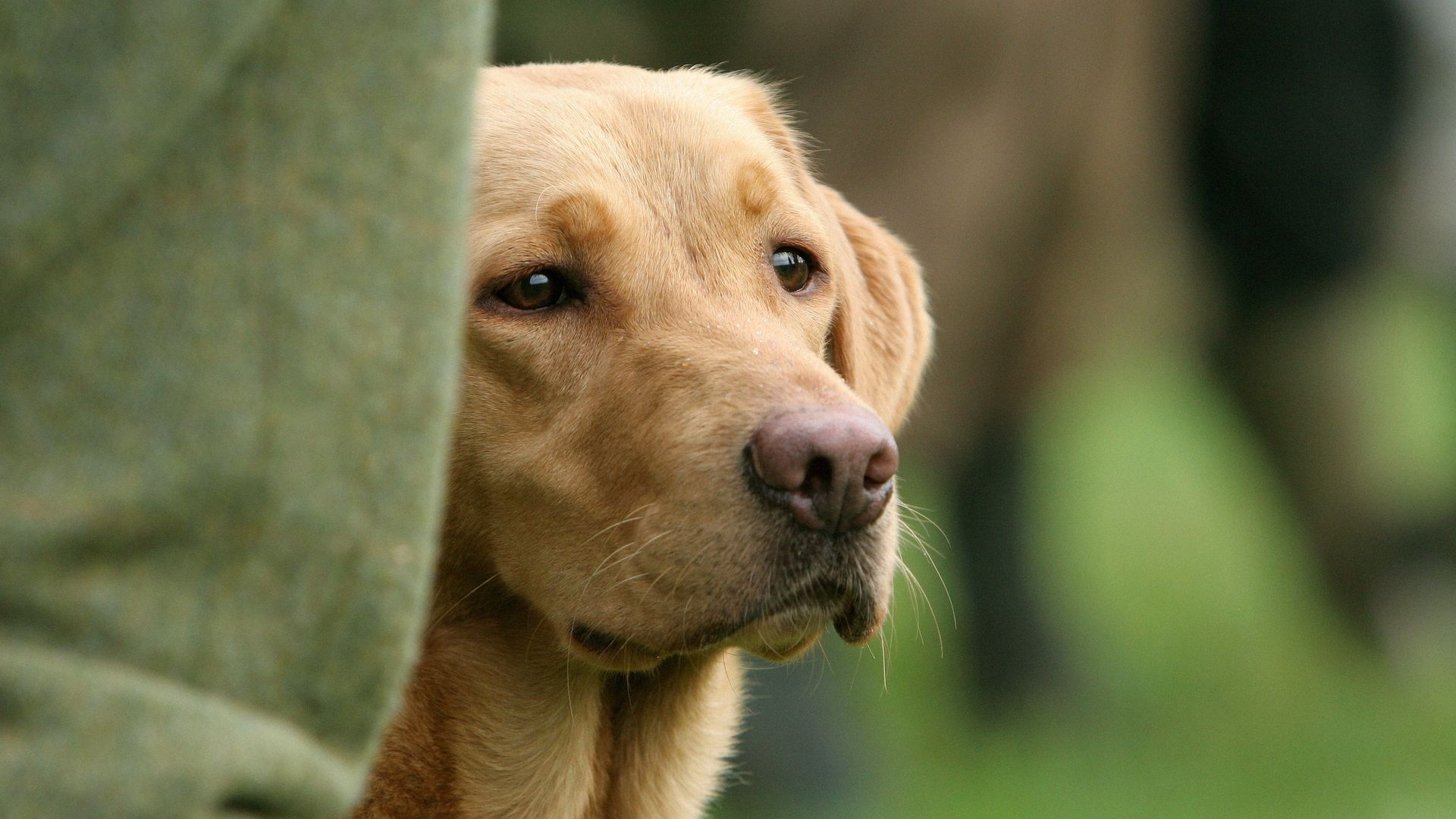Howard Kirby takes us through how to teach our gundogs the blind retrieve, and explains how we can set our dogs up to succeed by using the ‘Birdy Place’...
With Covid restrictions now considerably eased, it’s great to be able to get out and about, meet up with other people and enjoy the opportunity to train our gundogs. Training with a like-minded friend or even a small group can be so enjoyable and, if organised correctly, can be a great place to share and compare ideas whilst building on steadiness around other dogs. Getting out and about with others can be great for self-motivation and the perfect excuse to share cake.
With all that lovely cake inside you (by the way, the advantage of being an adult is that you don’t always have to wait until training is over before indulging; I recommend getting some down you straight away – it helps me to concentrate... anyway, back to the dog training), we can burn off some of those calories and energy by placing and throwing dummies for each other. This can be really helpful when developing retrieving skills. Which leads me nicely into this month’s article.
 credit: Megan Williams / Alamy S
credit: Megan Williams / Alamy S
Planning your retrieving training sessions
When planning a retrieving training programme for a young dog, there are three main areas that I like to focus on. First come the ‘marked’ and then ‘memory’ retrieves, which, once established, flow nicely into the development of the ‘blind retrieve’.
There’s no set timetable to adhere to when training a youngster, as nature and nurture will influence when and how much retrieving practice you should do with a given individual. In my experience, the day-to-day management will significantly influence the dog’s interest in retrieving. Of course, breed lines will be the fundamental starting point, but a well-planned exercise and training program will be essential.
On the subject of exercise, a significant part of your dog’s daily exercise will be best executed as part of its daily training. We need to keep the dog focused on us and the rewards we offer; it will be a huge mistake for you to allow this to go the other way.
For the purpose of this article, I’m going to assume that you are already at a point where your young dog is experienced in the marked and memory retrieve aspects of its development. If you’re not sure how to get to this point, there’s a back catalogue of training articles for you to read in previous editions of Sporting Shooter magazine and on this website. There is another memory retrieve article here, and endless articles on all aspects of gundog training here.
Our objective is to build the dog’s understanding that, when aligned alongside us, if he takes the line we give him, there will be a retrieve at the end of it. Using what we refer to as ‘Birdy Places’, we can gently school the dog to form a belief that we can help him to locate birds and dummies.
 credit: Nick Ridley Photography
credit: Nick Ridley Photography
Don't set your dog up to fail!
Inexperienced handlers regularly make the mistake of going to enormous lengths to point a dog at a hidden ‘bird’ that the dog fails to find. It’s important to understand that stopping, re-directing, bellowing and dragging a young dog around the field will not build the desired partnership. Aim to set exercises that get the dog to the bird in ONE cast. There are, of course, deliberately planned exceptions to this guidance.
Even in the best planned and aligned casts, there will be misunderstandings. In the event that the dog is clearly off line, then you should stop the dog and bring it back to you. Once back at your side, you will need to make a well-informed decision. The question is whether to realign and cast again or move forward towards the dummy. Stating the obvious, this is done to reduce the distance and therefore make the retrieve easier. Sometimes you will choose to go really close in order that you can deliver successful instruction. Walking towards the dummy will often assist the dog to understand the direction and line you wish it to take.
 credit: rebecca green
credit: rebecca green
The Birdy Place: phase 1
Whilst developing a dog’s ability to make blind retrieves, you may find it useful to use a familiar area, a place where the dog makes regular retrieves from. This is ‘the Birdy Place’ – a clearly defined area of gentle cover, some long grass, a dell, or a small clump of bushes. Once the dog becomes confident that this area will hold dummies or birds, we use it to our advantage.
Start by sending the dog for marked retrieves. Do this from different distances and angles of approach. If you are lucky enough to have a ‘Birdy Place’ that is in the middle of a field, then you’ll be able to take a 360° approach. Ensure that the dummy is consistently placed in more or less the same spot for each of your early retrieves. This will help the dog to find the dummy quickly and easily. This quick-fix success will help to build your dog’s confidence and enjoyment.
Young dogs won’t have the experience or confidence to continue holding an area if they don’t find the dummy quickly. If you continually make things too difficult for this type of dog, it’s likely it will arrive at the ‘mark’ and have a quick look around, before appearing to lose interest and either rush back to you or just start sniffing around.
This behaviour can easily become a habit, and can lead to an erratic interest in retrieving. You have accidentally schooled the dog to understand that retrieving is optional and that ignoring the dummy leads it to lots of other self-rewarding behaviours.
With some really hard-hunting youngsters, making the dummy too difficult to locate can have the opposite effect and the dog will quickly widen its search area and leave the ‘fall’. This hunting strategy might look impressive to the uneducated eye, but it will quickly lead to other issues.
Let’s just go back over our objectives: we need the dog to run in a straight line to the fall of the bird; be accurate in assessing and perceiving distances; and once it arrives in the area get its nose onto the floor, now, to locate the dummy as quickly and efficiently as possible, before returning to the handler.
Once the dog is running out confidently, we can add the memory retrieve, although it’s not always a bad idea to include these in phase one of your retrieving plan. By mixing up ‘marks and memories’ you will be able to practise voice-command ‘send aways’ on marked retrieves and alignments using your arm and body position on the memory retrieves.
 credit: LEE BEEL PHOTOGRAPHY
credit: LEE BEEL PHOTOGRAPHY
Raising the bar: phase 2
In phase 2, we can start to introduce the memory blind. This assumes the dog has a learned association that links retrieves with the ‘Birdy Place’.
Before you get the dog out of the kennel or truck, you can walk out to the ‘Birdy Place’ and drop three dummies. Ensure they are a few metres apart and not highly visible. We don’t want the dog to swap or double pick.
When aimed at the ‘Birdy Place’, your dog should be thinking, “hmm, I didn’t see them throw anything in there, but, every time I’ve been sent there’s a dummy to be found, so let’s give it a go”. Of course, a well-placed dummy or dummies will ensure that the dog made the right choice. Now you can send them back to find the second and third dummy. Assuming all has gone well, this will be enough for this one training session. Put the dog away and allow it to rest.
Again, by ensuring that your dog is successful in finding the dummy in one cast, you can slowly change the approach angles and distances. It’s important to remember that this will never equate to a ‘true blind’, but we are installing the building blocks for the future.
You will need to find and establish as many ‘Birdy Places’ as you can. This will help to ensure the dog’s continued development. Slowly but surely, you will develop the understanding and confidence to be able to send your dog out for blind retrieves.
Have fun, enjoy your dogs and Keeeep Training.